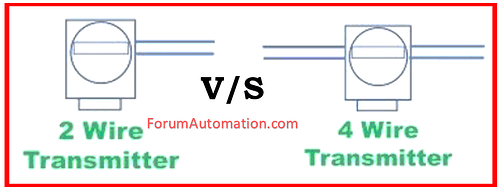Transmitters are the foundation of industrial measurement, yet not all are wired identically. Understanding 2-wire vs. 4-wire transmitters assists in selecting the appropriate one for your process.
Difference Between 2-Wire and 4-Wire Transmitters
2-Wire Transmitters vs 4-Wire Transmitters
| Parameter | 2-Wire Transmitter | 4-Wire Transmitter |
|---|---|---|
| Power Supply | Powered by a (loop-powered) signal loop. | Includes a separate power supply. |
| Wiring | Using two wires for both power & signal. | Utilize two wires for power & two for signal. |
| Installation | Simple, less wiring needed. | Requires more wiring. |
| Cost | Generally lower owing to less cabling. | Higher due to extra wiring & components. |
| Signal Type | Typically 4-20 mA. | May be 4-20 mA (or) voltage signals. |
| Location | Suitable for remote (or) outdoor applications. | Typically utilized in control panels (or) local configurations. |
| Power Handling | Limited power handling capacity. | Can withstand higher loads. |
| Loop Isolation | Shares common loop – may require isolation. | Power & signal circuits are readily separated. |
| Applications | Widely utilized in industrial field instrumentation. | Used in more intricate or powerful applications. |
| Example Devices | Pressure, temperature, and level transmitters. | Analytical instruments and smart transmitters. |
You can also follow us on AutomationForum.co, Facebook and Linkedin to receive daily Instrumentation updates.
You can also follow us on ForumElectrical.com , Facebook and Linkedin to receive daily Electrical updates.
